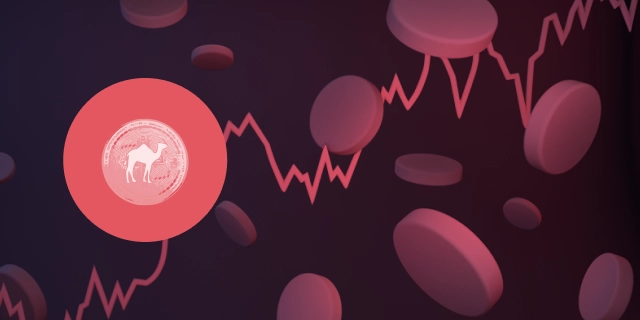Exchange your crypto now
What Is the Monero price prediction today
AT A GLANCE
- In 2025, Monero price is expected to reach $555.19, according to some experts
- 2026 promises to be turbulent, with prices ranging from $0 to $826.45, with PricePrediction.net predicting a breakthrough leading to a price rise to $826.45
- By 2030, XMR price can hit $555.19
Monero fundamental analysis
Monero is a cryptocurrency that prioritizes privacy and anonymity. It was launched in April 2014 as a fork of the Bytecoin blockchain. Monero's primary focus is on obscuring transaction details, including the sender, receiver, and transaction amount, through the use of various privacy-enhancing technologies such as ring signatures, ring confidential transactions (RingCT), and stealth addresses.
Ring signatures allow for mixing a user's transaction with others, making it difficult to determine the actual sender. RingCT further improves privacy by concealing the transaction amount. Stealth addresses ensure that recipients' addresses are not visible on the blockchain, enhancing privacy for the receiver.
Ring Confidential Transactions (RingCT)enables Monero transactions to be both private and secure by hiding the transaction amounts and ensuring that only the sender and receiver can view the details.
Monero has a dynamic block size algorithm that adjusts the size of blocks to accommodate changes in transaction volume, ensuring scalability while maintaining low fees.
Similar to Bitcoin, Monero initially used a PoW consensus mechanism based on the CryptoNote protocol. However, in 2020, Monero transitioned to a new PoW algorithm called RandomX, designed to be resistant to ASIC mining and promote decentralization.
A proof-of-work (PoW) consensus mechanism allows users to mine XMR tokens. Mining involves validating transactions and adding them to the blockchain while also providing security to the network. Miners use computational power to solve complex mathematical puzzles and are rewarded with newly minted XMR coins.
Monero aims to be a decentralized and fungible cryptocurrency. Fungibility ensures that all coins are interchangeable and indistinguishable, regardless of their history. This means that every unit of Monero is equal in value, promoting its use as a medium of exchange.
Monero's blockchain is designed to be opaque, with no publicly visible transaction history. This ensures that past transactions cannot be traced, enhancing privacy for users.
Monero is developed as an open-source project, with contributions from developers around the world. The development community is committed to maintaining and improving the privacy, security, and usability of the Monero protocol.
Monero's emphasis on privacy has made it popular among individuals who prioritize anonymity in their financial transactions. It's often used in situations where users want to keep their financial activities private, whether for personal reasons or to protect against surveillance.
Additionally, Monero's development community is committed to continuously improving privacy and security features to maintain its status as one of the leading privacy-focused cryptocurrencies.
Miners are responsible for validating transactions on the network. When a user sends Monero (XMR) to someone else, miners verify the authenticity of the transaction and include it in a new block on the blockchain.
Miners participate in the consensus mechanism of the blockchain, which determines how agreement is reached among network participants regarding the state of the ledger. Monero's consensus mechanism is based on proof-of-work (PoW), where miners compete to solve complex mathematical puzzles to add new blocks to the blockchain.
Monero was founded in April 2014 by a pseudonymous individual or group under the name "Thankful_for_today." The exact identity of the founder(s) remains unknown, as Monero was launched with a focus on privacy and anonymity, which extends to its development team.
Miners use specialized hardware, such as graphics processing units (GPUs) or application-specific integrated circuits (ASICs), to perform the calculations required for mining. In the case of Monero, the RandomX algorithm was introduced to promote CPU mining and resist ASIC mining, thus aiming to maintain a more decentralized mining ecosystem.
The motivation behind the creation of Monero was to address perceived shortcomings in existing cryptocurrencies, particularly Bitcoin, regarding privacy and fungibility. Bitcoin, while revolutionary in many aspects, lacks strong privacy features, as transactions are recorded on a public ledger, making it possible for anyone to trace transactions back to their origins and determine wallet balances. Monero aimed to solve this issue by implementing advanced cryptographic techniques to obfuscate transaction details, ensuring that transactions are private and unlinkable.
The Monero ecosystem is continuously evolving, with ongoing research and development efforts focused on improving scalability, usability, and privacy. This includes exploring new technologies, optimizing existing features, and addressing potential vulnerabilities.
There are various wallets available for storing, sending, and receiving Monero. These wallets come in different forms, including desktop wallets, mobile wallets, web wallets, and hardware wallets. Some popular Monero wallets include the official Monero GUI wallet, Monerujo (for Android), and Cake Wallet (for iOS).
Several cryptocurrency exchanges support the trading of Monero against other cryptocurrencies and fiat currencies. These exchanges provide liquidity and facilitate the buying and selling of XMR tokens. Some popular exchanges where Monero is traded include Binance, Kraken, and Bittrex.
Some businesses and merchants accept Monero as a form of payment for goods and services. Efforts to increase merchant adoption help expand the use cases for Monero and promote its utility as a currency.
The XMR token has a total supply of 18,398,415 XMR and as of February 16, the circulating supply is 18,399,676 XMR.
Monero live price chart
At the beginning of September, the Monero price chart was at around $140 and established an uptrend. For a month the value of the XMR token was going up, but not steadily. In the series of ups and downs, the Monero price chart reached $156 after a month. Then for about a week the XMR conversion rate was going down, affected by the market correction. In 10 days the Monero price chart dropped to $150.
From October 18 the Monero price chart started growing again and a week after to buy Monero traders already paid $160. At the very end of the month, the XMR price chart started growing again, reaching $174 in 2 days by the last days of October. During the first week of November, the value of the Monero network native token went down dropping to $166 by November 7. Another week later the price of the Monero token went up to $169, remained there just for 2 days, and went down again.
By November 16 the Monero price dropped to $160 and stayed around the same level for a week, before going up again. By November 25 the price of XMR reached $170, but then went down. In fact, till the very beginning of January 2025, the Monero price chart kept bouncing between $163 and $178. Finally, after January 4, the price of Monero couldn’t remain at this level and the support was broken, causing the value of the XMR token to collapse. In 2 days the price chart dropped from $167 to $148.
The price didn’t remain at this low level and after January 10 started recovering. In a bit longer than a week the value of the XMR token reached the level of $158, then went down for a short time and established a new uptrend again. By February 3 to swap XMR traders paid $168, and then suddenly in a day the value of the Monero coin collapsed to just $105.
The price loss wasn’t permanent and 2 days later the Monero conversion rate grew to $129 and then went down again, bouncing between $129 and $138 till the time of writing on February 19.
According to the current state of the XMR price chart and the prevailing tendencies at the market, experts think that the price of Monero will continue moving in a downward trajectory, reaching the level of around $100 by the beginning of the summer.
Monero technical analysis
Despite the fact that 100% accurate technical analysis for Monero cryptocurrency is hardly possible, on this advanced technical analysis tool by TradingView you can see the real-time aggregated XMR buy-and-sell rating for selected timeframe. The summary for XMR/USD is based on the most popular technical indicators — Moving Averages, Oscillators and Pivots.
Exchange your crypto now
Monero price prediction
Monero price predictions summary
Monero price prediction for 2025
Monero price prediction for 2026
Monero price prediction for 2027
Monero price prediction for 2028
Monero price prediction for 2030
FAQ
Is Monero a good investment?
Is Monero better than Bitcoin?
What is Monero worth?
What will Monero be worth in 2030?
Does Monero have a future?
Is Monero harder to trace than Bitcoin?
Is Monero illegal?
Will Monero pass Bitcoin?
Summary
As it can be clear from the analysis cited above, Monero's (XMR) projections are rather contradictory. There is no universal consensus either about positive or negative future XMR price movements. Indeed, the future possible growth depends on various factors: announcements, new technological solutions of the Monero projects, the crypto environment in general, legal position, and so on. We kindly remind you that before investing in any cryptocurrency, it is essential to do your own research (DYOR).
About SwapSpace
SwapSpace is a cryptocurrency exchange aggregator that allows to swap over 4000 cryptos with both fixed and floating rates. We gather the rates of major crypto exchanges on the market onscreen and let our users compare and choose whatever option they like the most. We don’t add any fees over the partners’ rates, which makes the exchanges via SwapSpace profitable. The exchange time is no longer than at any of our integrated services starting from 10 minutes. SwapSpace support works 24/7.Exchange your crypto now




Leave a comment